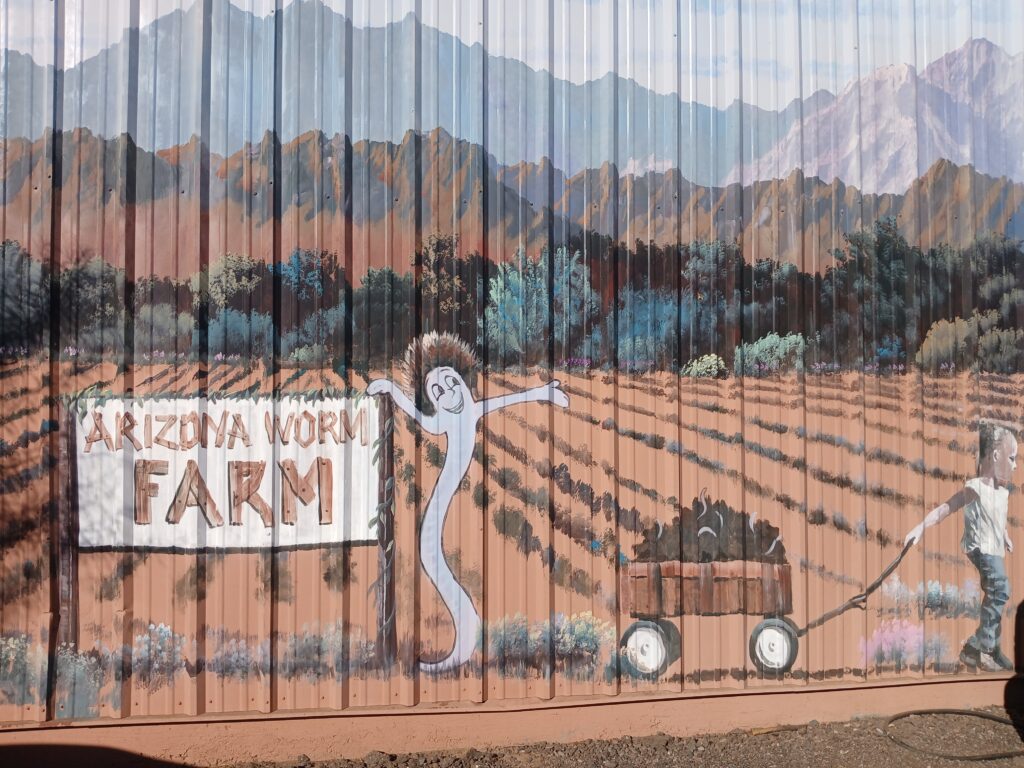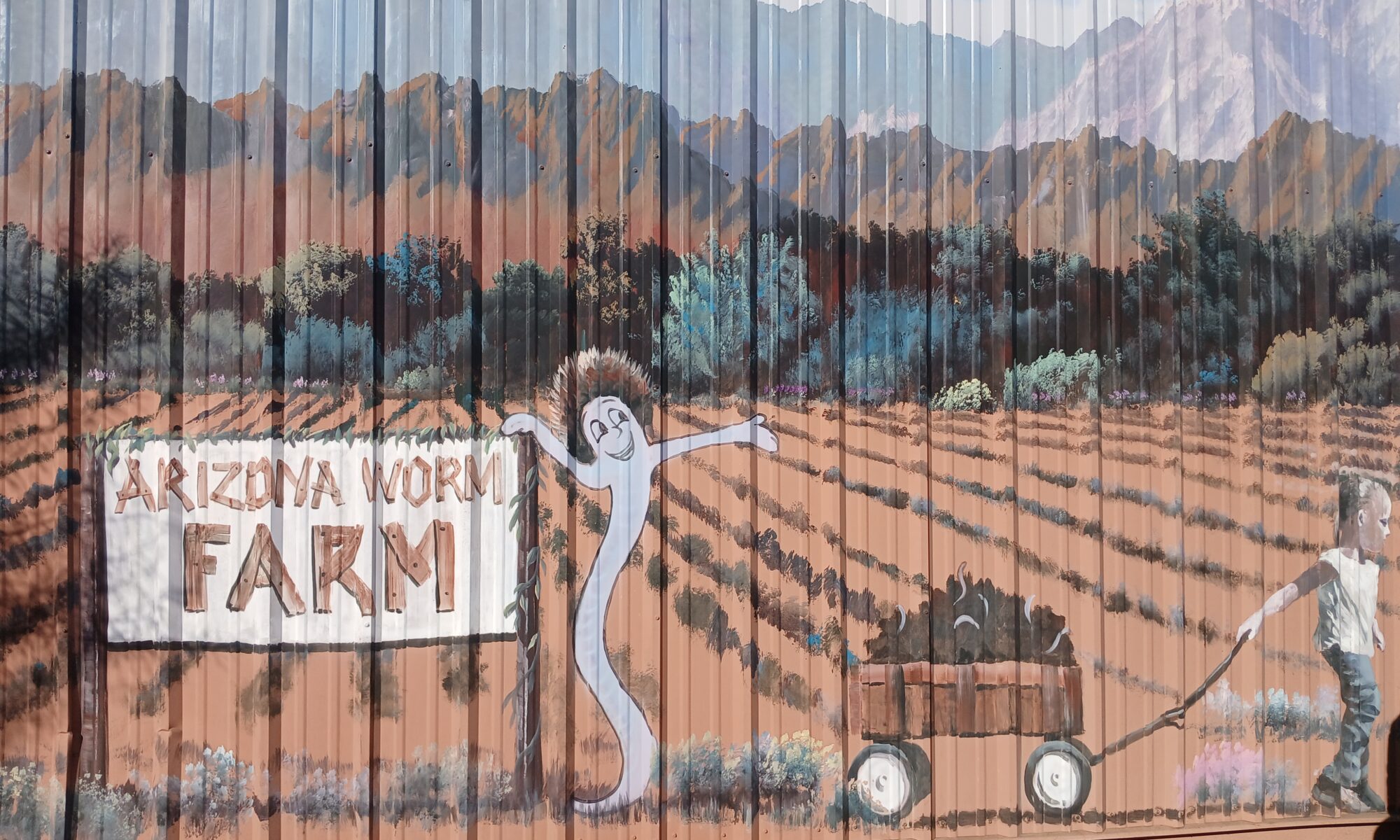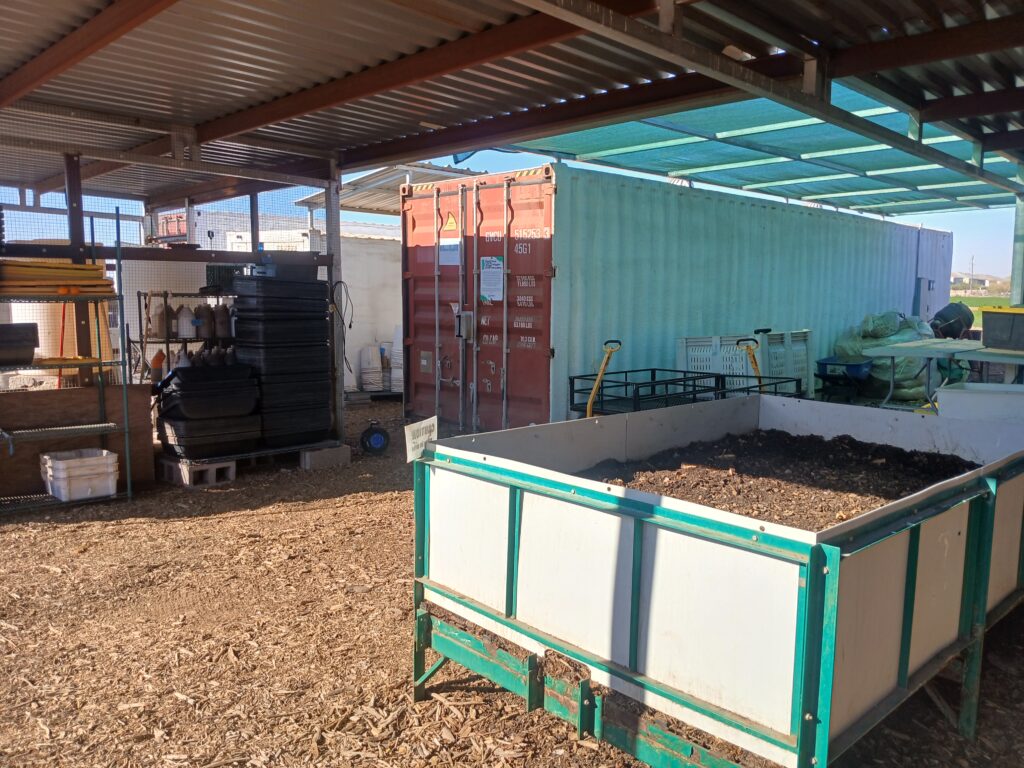
Here’s something you don’t usually do on vacation in Phoenix – visit a worm farm in Arizona. But that’s what we did in December, and we loved it. These worms are grown for composting and fertilizer. The Arizona Worm Farm sells worms, castings and black soldier fly larvae direct-to-consumers (gardeners and farmers). This is a 10-acre urban farm (though the area itself does not feel urban).
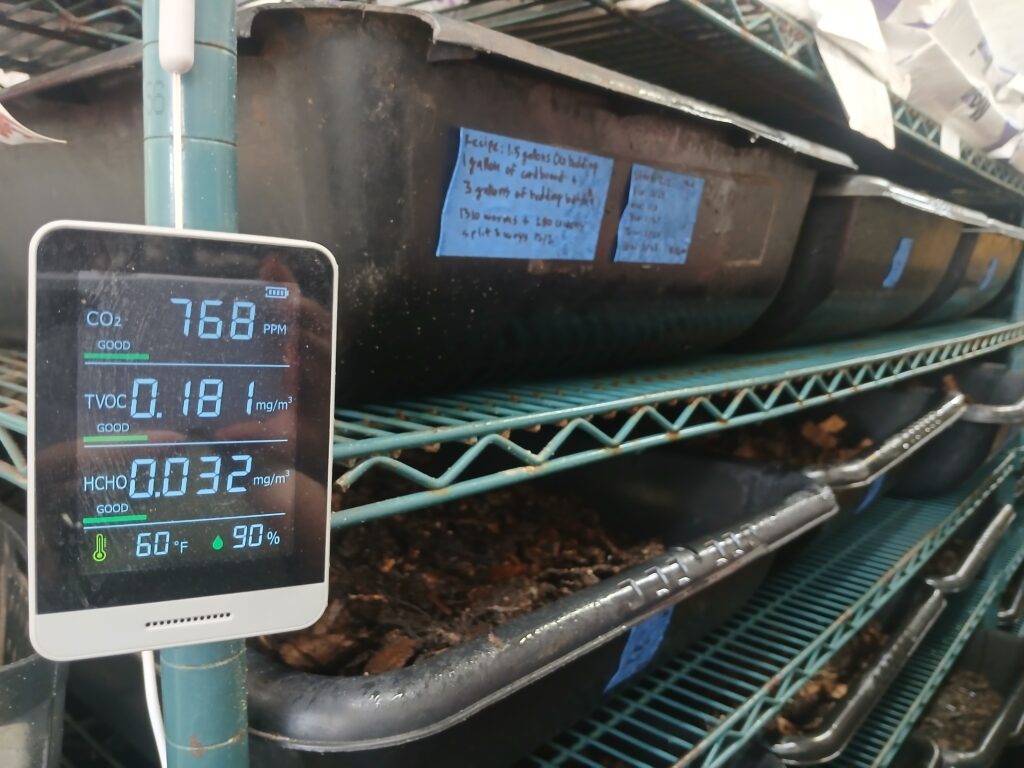
Visit a Worm Farm in Arizona
You can visit and do a free self-guided tour – they have signs throughout the farm with QR codes so you can also watch short videos. You can also book a private tour if the timing is right (it was not right for our visit). That said, even on your own, the staff will take time to explain things to you if they are available. Percy took us inside the shipping container to show us the growing worms and give us an impromptu tour and Q&A session.
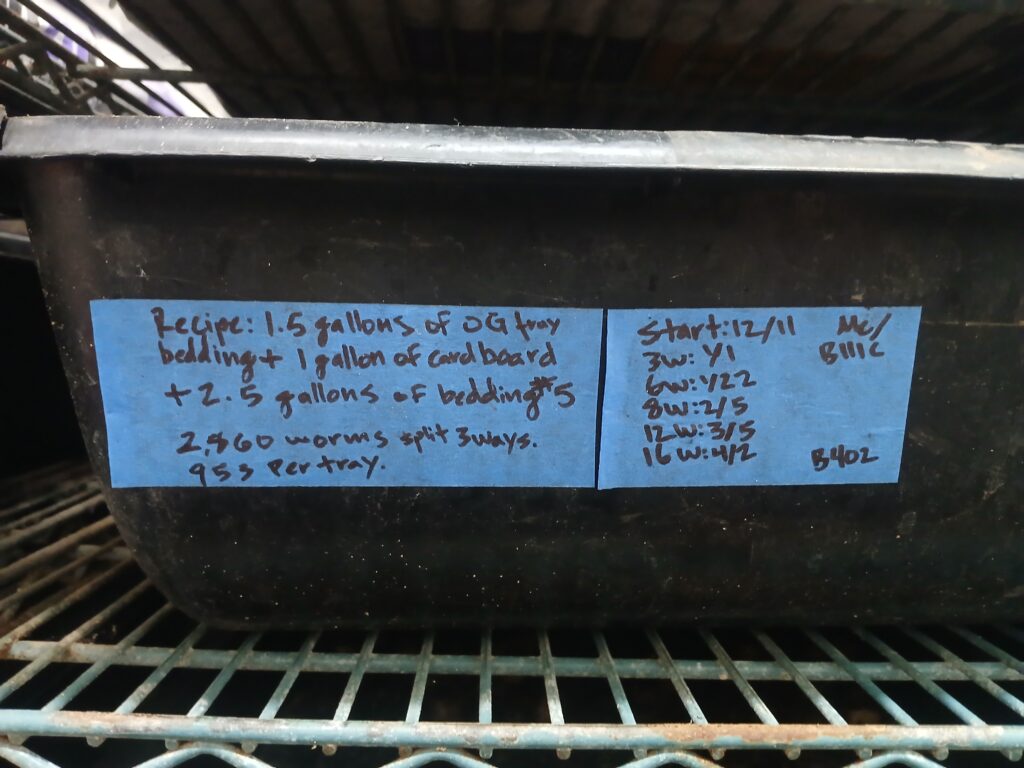
The worms grow over 8-12 weeks. They eat plant waste and are also fed other things. They are “innoculated” with fresh food. Each bin is 20-25 pounds and they count the worms routinely. They do so with a sample size, weighing and counting them. They count about 1/10 of the bin. You can see the recipe for the bin above: 1.5 gallons of tray bedding, 1 gallon of cardboard, 2.5 gallons of bedding #5. They have almost 1,000 worms per tray. In another tray Percy showed us, there were 710 cocoons and 1010 worms.
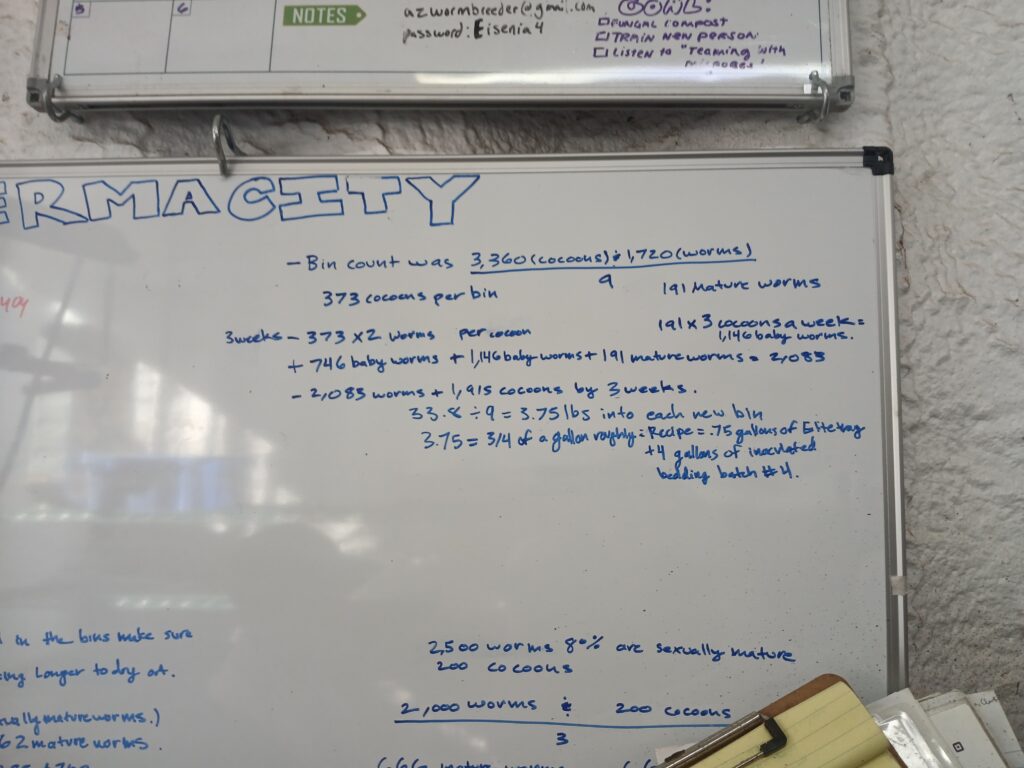
The worms self-limit their growth – they’ll stop laying eggs when they reach saturation level. At its ideal peak there are 2,000 worms per bin. If it gets up to 3,000, they’ll separate them out. Red Wigglers are hardy worrms that do not climb out of the bins. “They’re chill,” Percy said. Blue worms are more active, but ironically look red in color. They keep the lights on in the containers so the worms think it’s sunny and do not want to crawl out.
Percy and one other person take care of the worms.
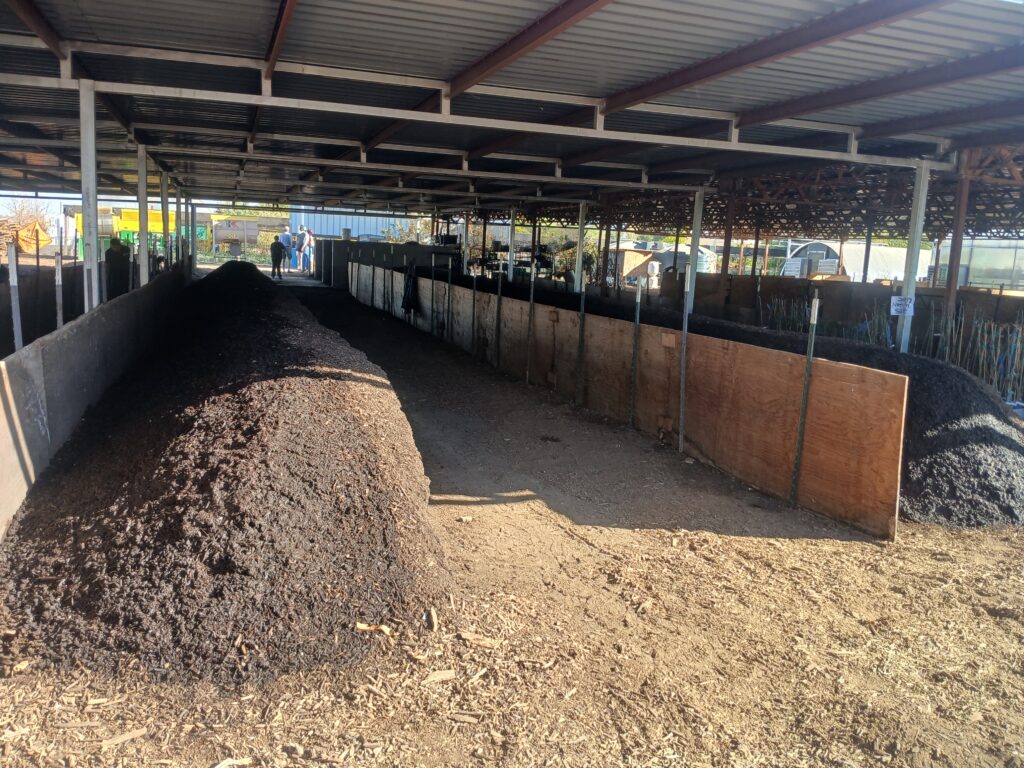
These dirt piles (which they call wedges) have 25,000+ Red Wigglers in them, and they are making castings. Castings, or worm poop, contain beneficial bacteria and can be used as fertilizer. The worms eat up to half their body weight daily. The piles of dirt are compost (they add one inch of food waste a week), and the worms will eat through the food and leave castings – about 1/4 inch per inch of food. The staff waters the dirt to keep it moist and help the worms. The food waste is donated to the farm. It takes 6-8 months for the worms to move across the wedge.
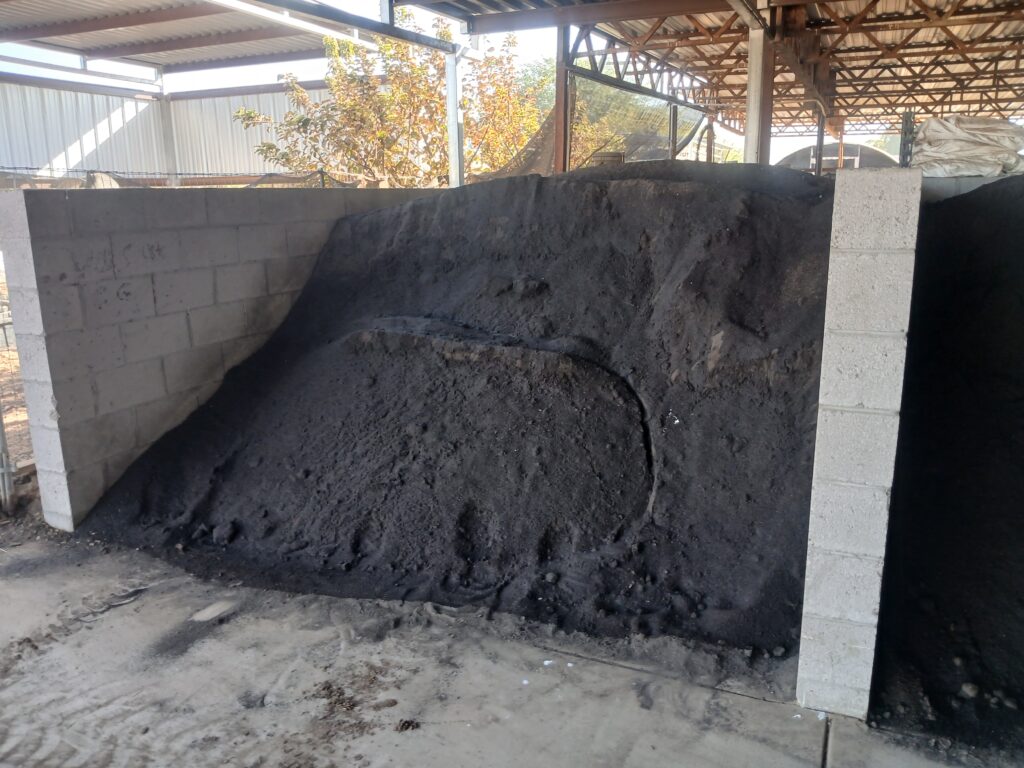
At some point, they harvest the castings, taking from the back part of this wedge which has no worms, and put it through a screener. They sort out the castings (which sometimes includes cocoons) to sell.
While not seen here, there is another shipping container where they breed black soldier flies. No one answered our knocks, so to my mother’s delight, we did not get to go inside. This is what we missed. We did see a table outside with a bunch of dead flies on it – I’ll spare you the picture. I once worked with a company in Canada breeding black soldier flies for the larvae, which is what Arizona Worm Farm is doing – as it makes a high protein, sustainable animal feed.

The straw bale house is an off-grid structure. The first floor is comprised of stacked straw bales, and coated in a mud/straw mixture. They added a loft with drywall and wood. The goal was to make a sustainable, comfortable but also well-insulated structure at an affordable cost. Inside you’ll see a small kitchen, run by solar power. The structure also has an outdoor shower, heated with solar power. It looked like it was used as an office.
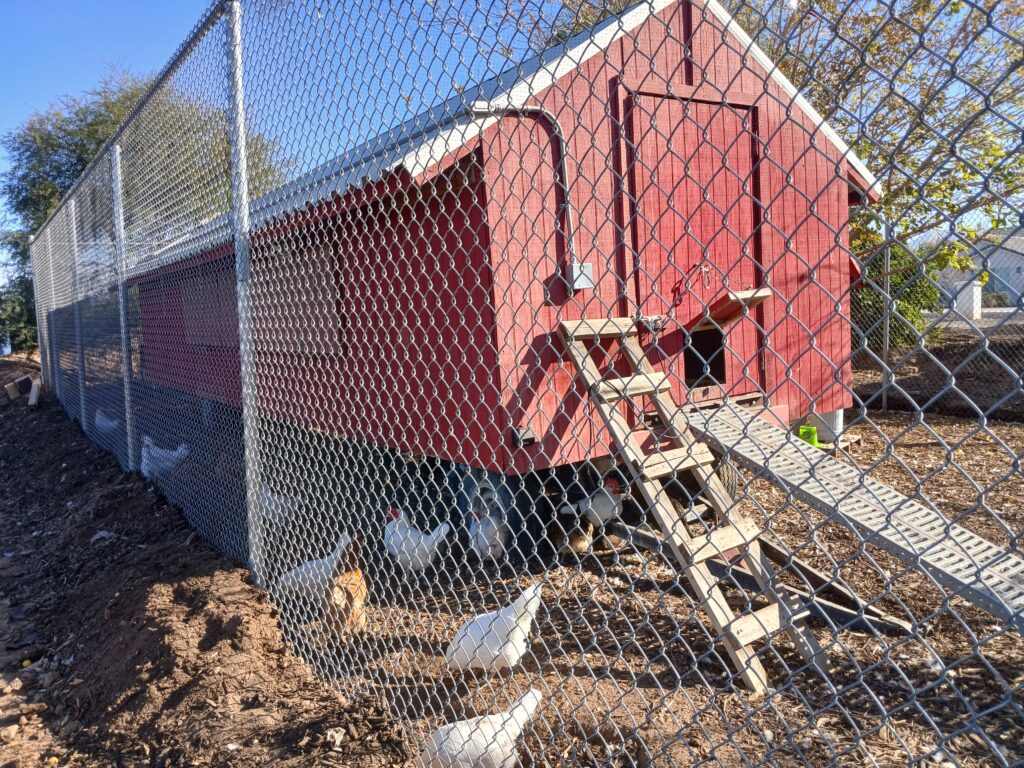
The farm has some chickens and goats, fed with garden waste, black soldier fly larvae, and some other items. The goats are nearby. In this area they also have other compost piles (windrows) that do not use worms. They recycle landscape waste, horse manure and food scraps, which are composted with microbes and water (and are turned regularly to speed up the process). The windrows get composted in about 6 months.
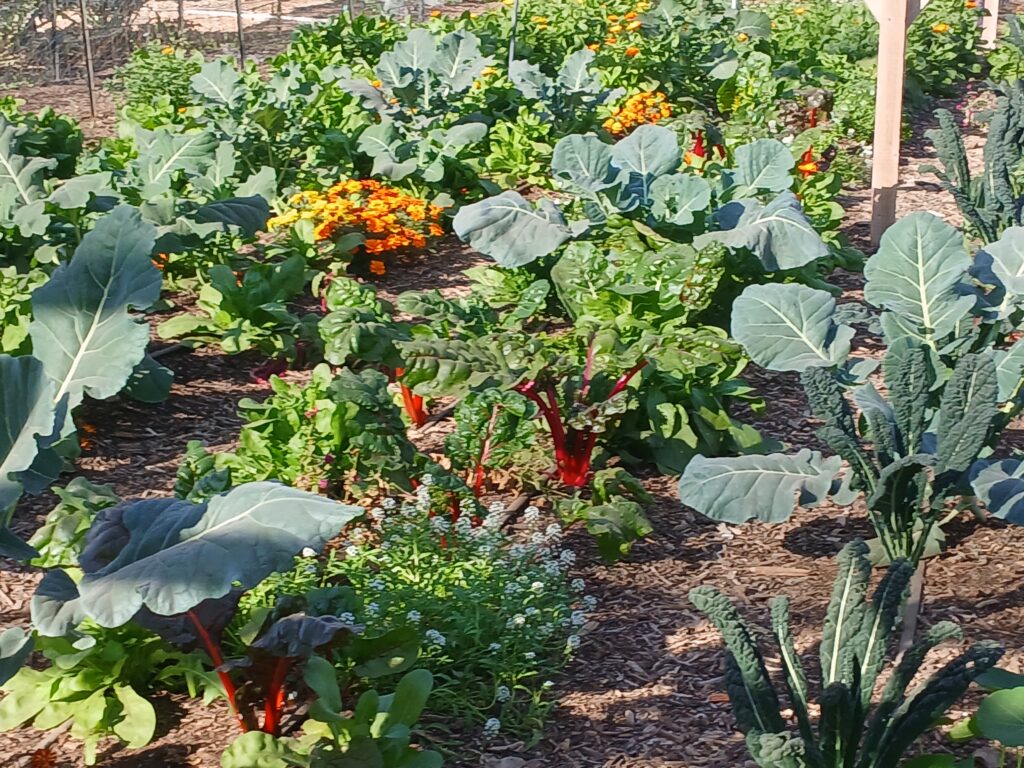
The worm farm in Arizona has a quarter-acre “food forest” with 100+ edible plants, as a display garden. They use permaculture techniques to maintain a living ecosystem in the desert. They want to grow many types of plants that allow them to be able to harvest something year-round. Their goal is to make their beautiful garden into one capable of feeding at least 40 people year-round.
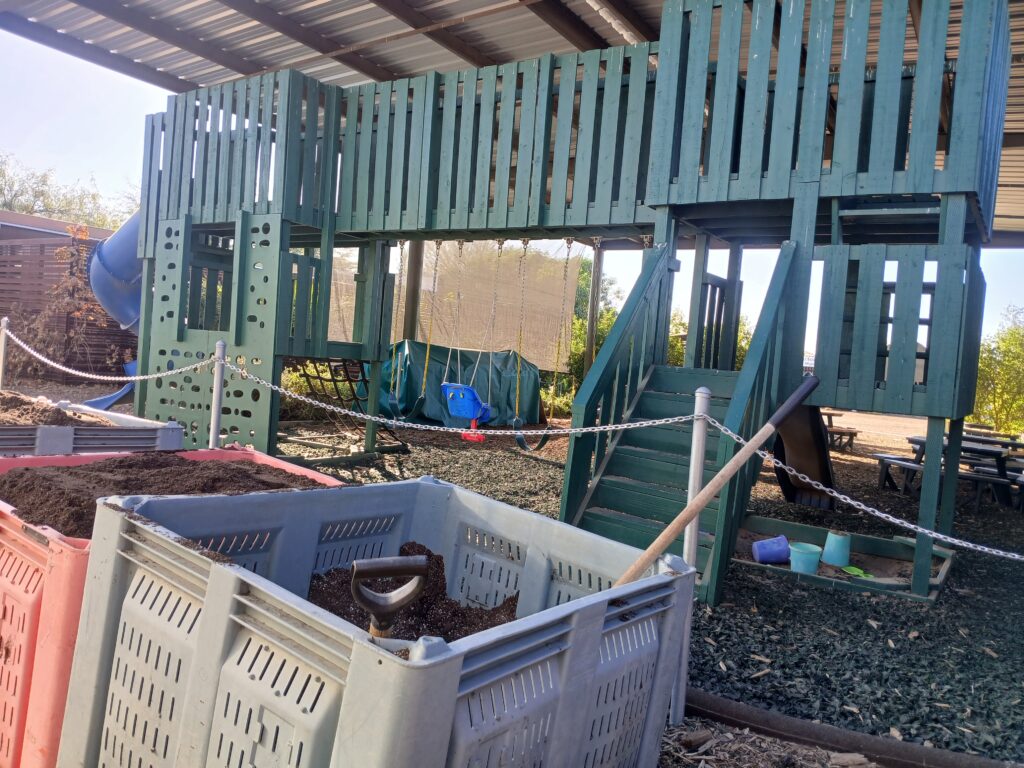
In addition to seeing the worms (and playing with them), and seeing the rest of the things on your self-guided tour, they have a play structure and picnic area. So bring a lunch!
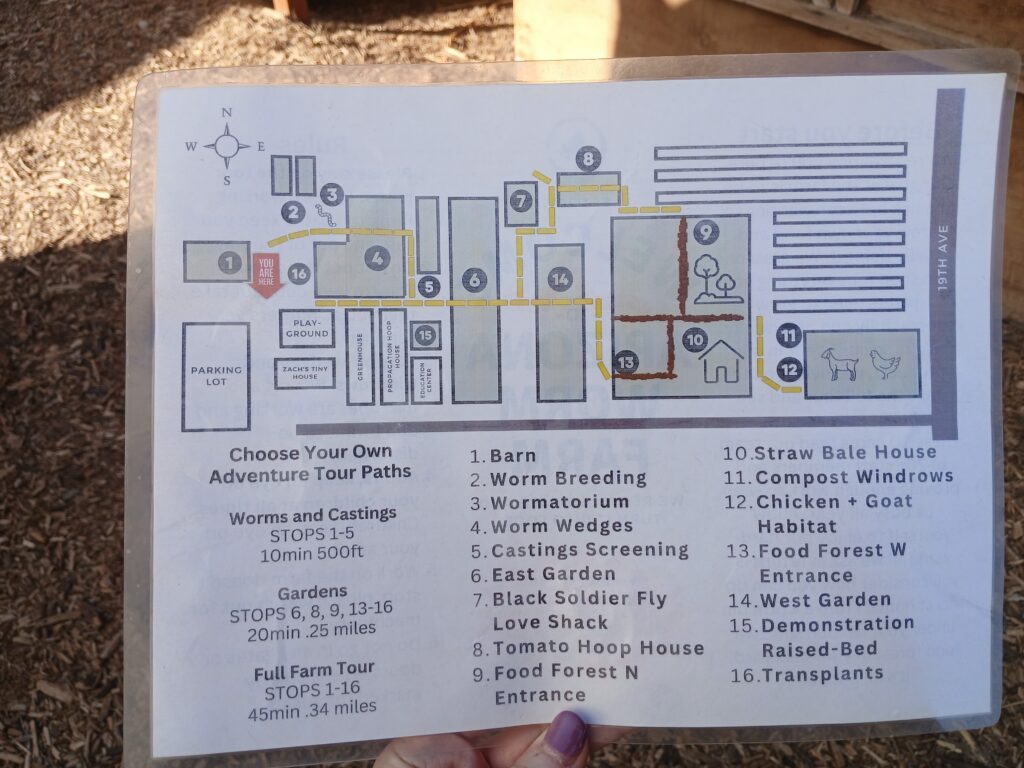
The farm has a gift shop where you can buy logo-wear (see the awesome sweatshirt below), as well as other worm-related items. They sell their worms, casting and larvae to gardeners and farmers around the country (yes, they ship). They also sell plants, soil, compost, mulch etc.
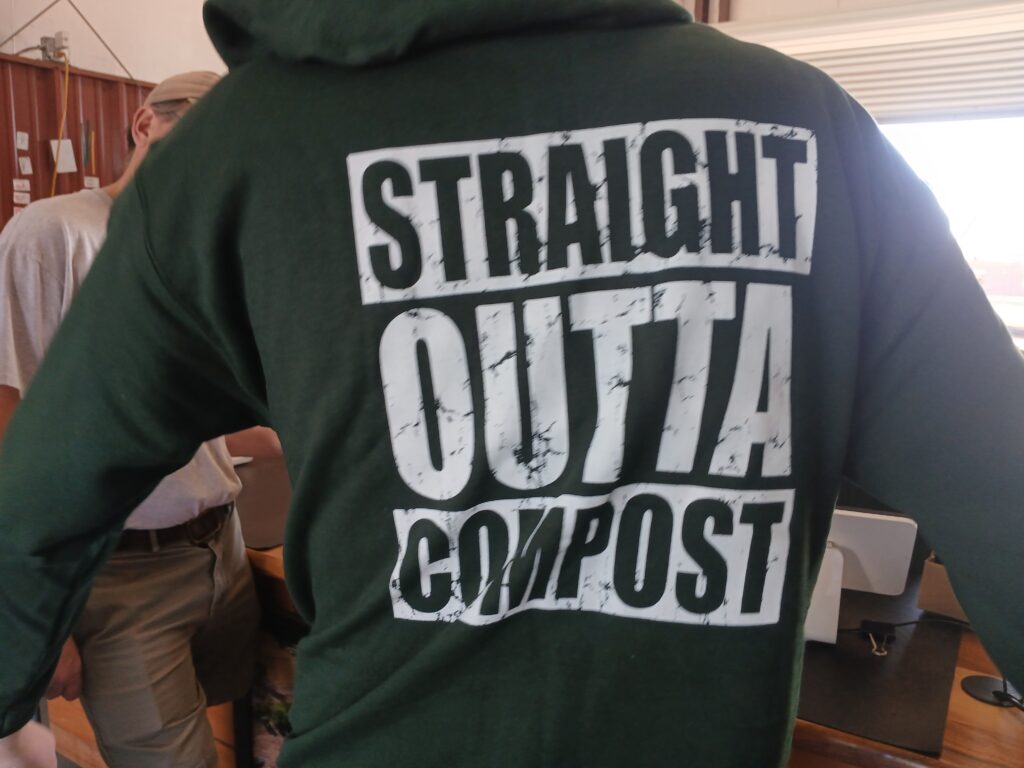
If you visit the worm farm in Arizona
Where: Arizona Worm Farm is at 8430 S. 19th Avenue in Phoenix, AZ
Cost: Self-guided tours are free. Groups must be 4 people or less. Larger groups need a tour guide. One-hour guided tours are best for ages 8+ and start at $100 for 10 people or less.
When: As of this posting, the worm farm in Arizona is open daily except Sunday. Check the website for hours.
Classes: They offer classes on gardening basics, growing herbs/flowers, composting, tomato growing, etc.
